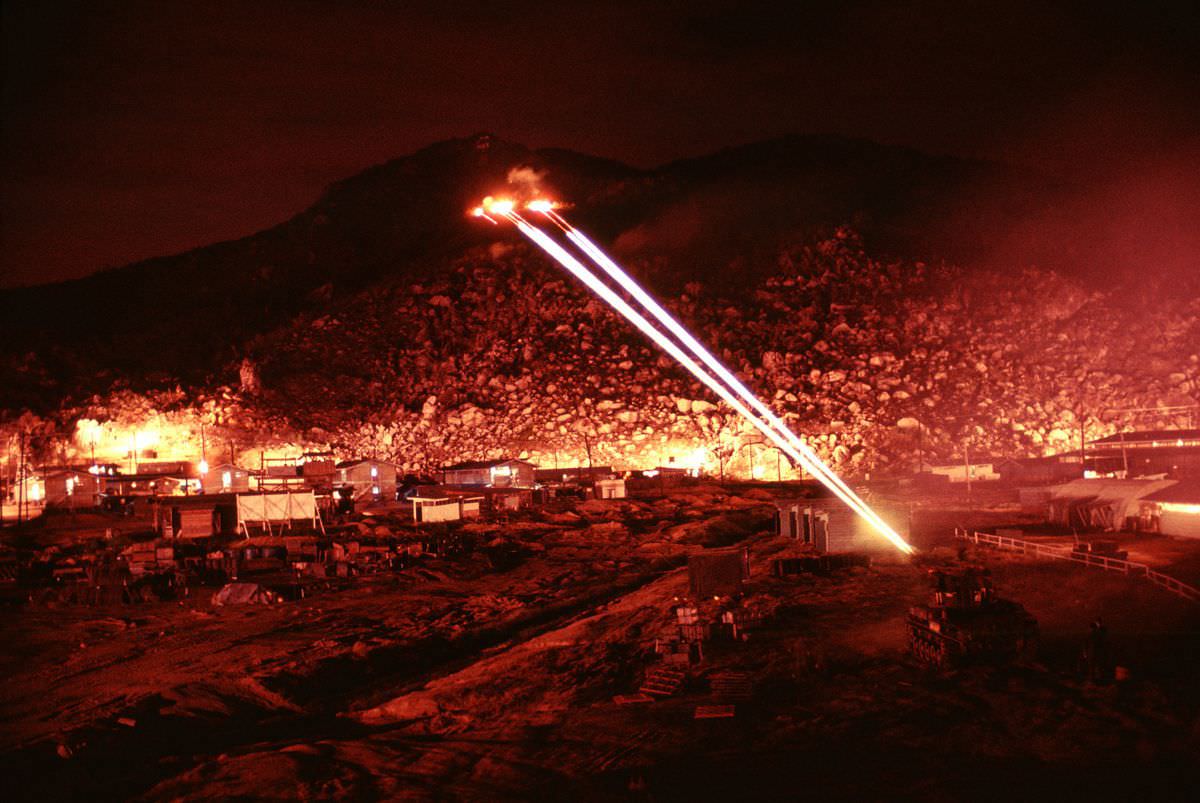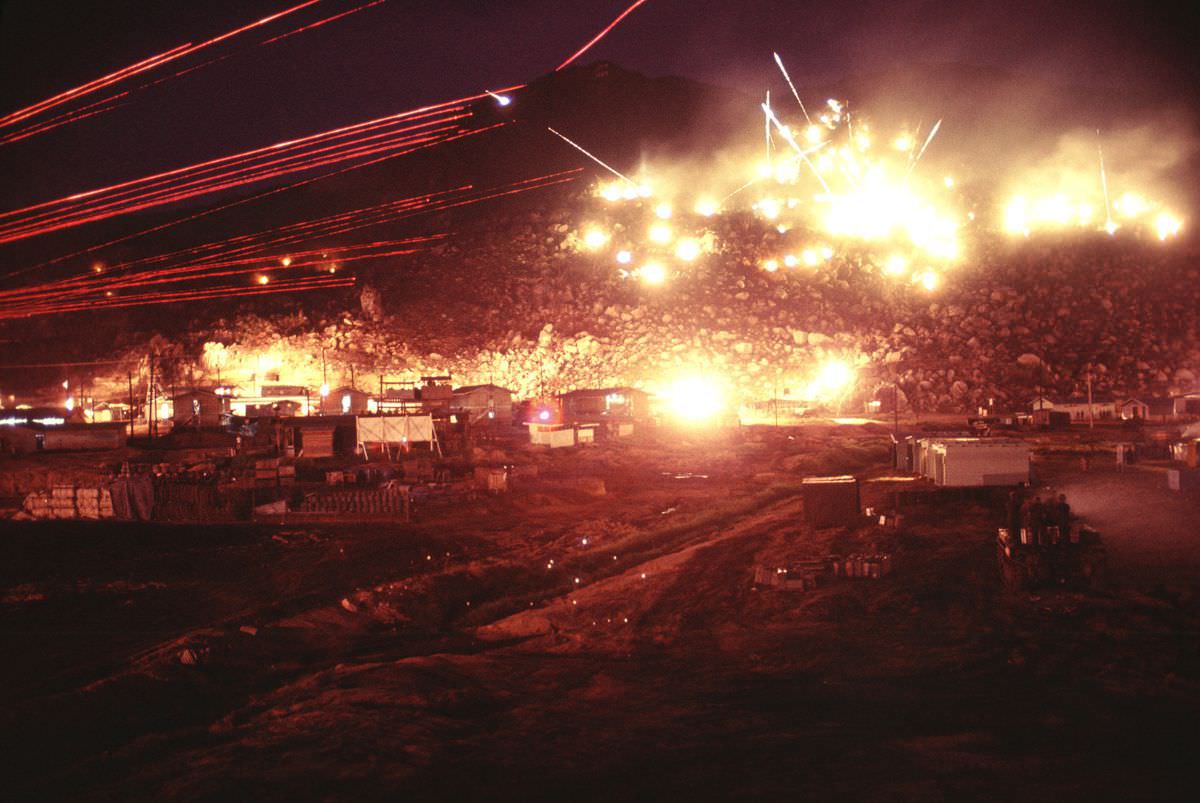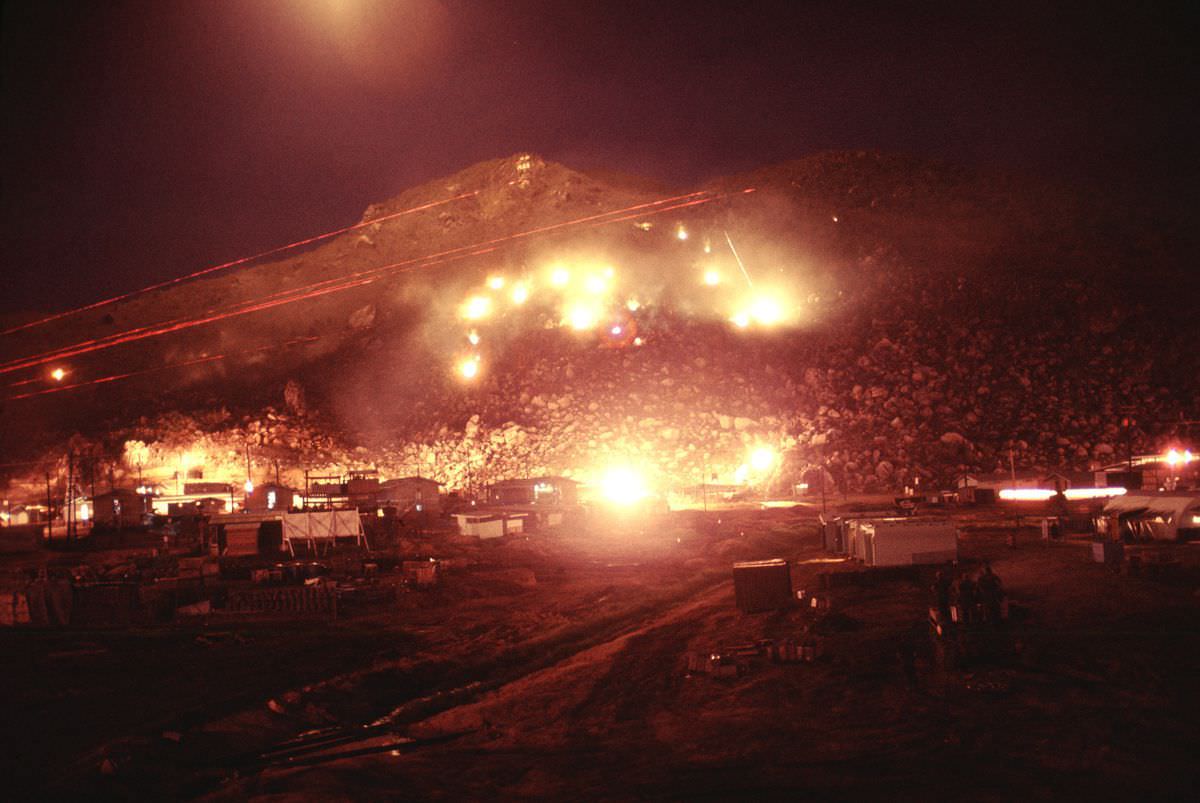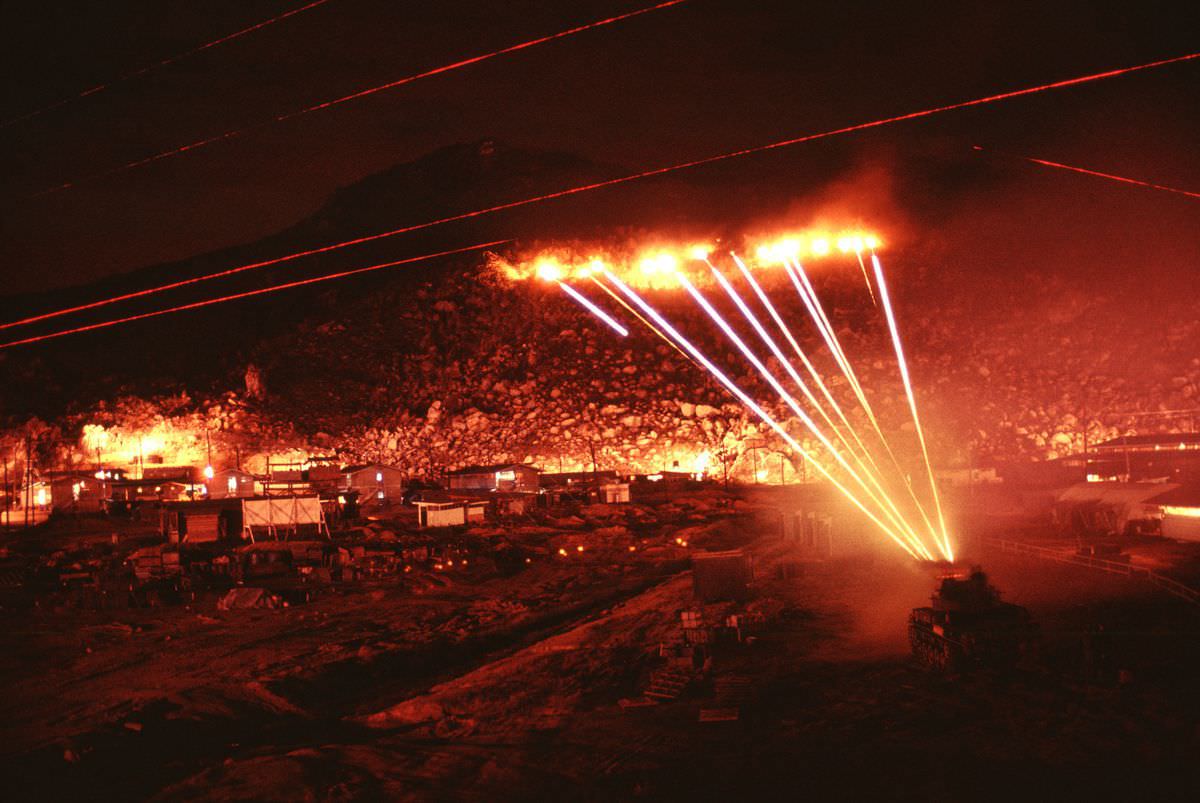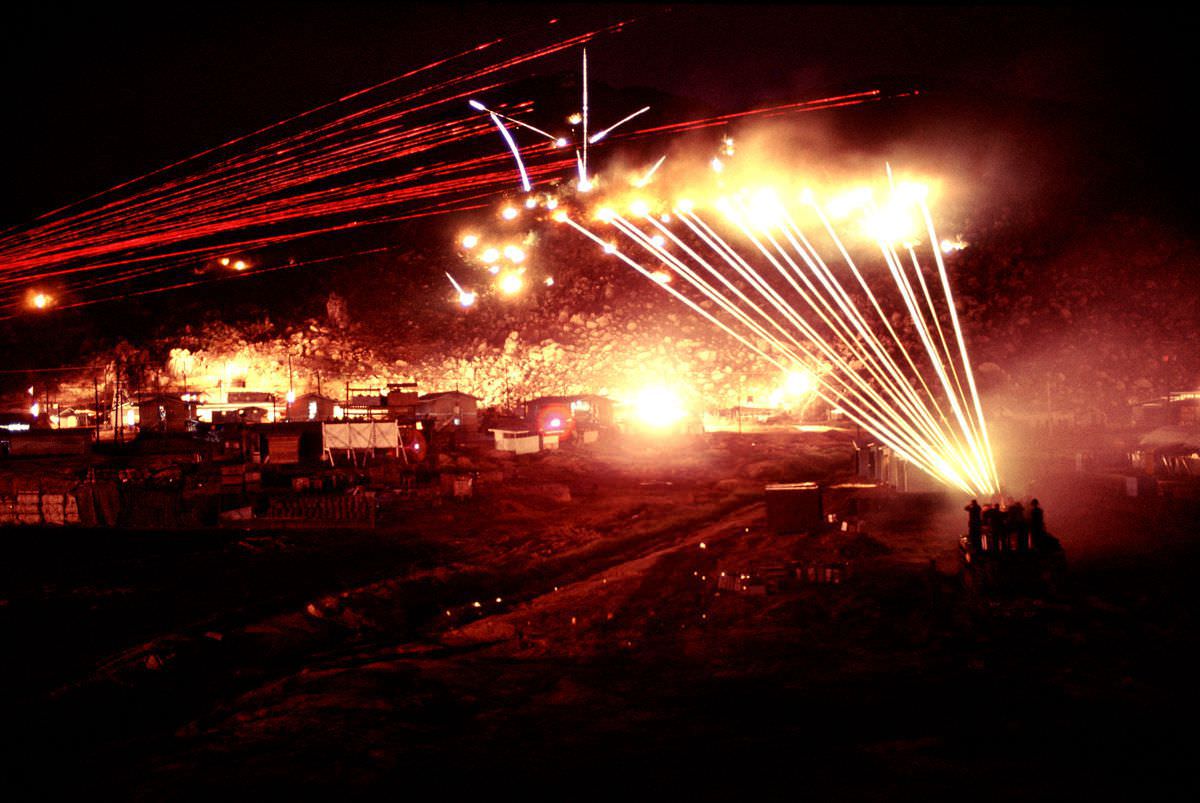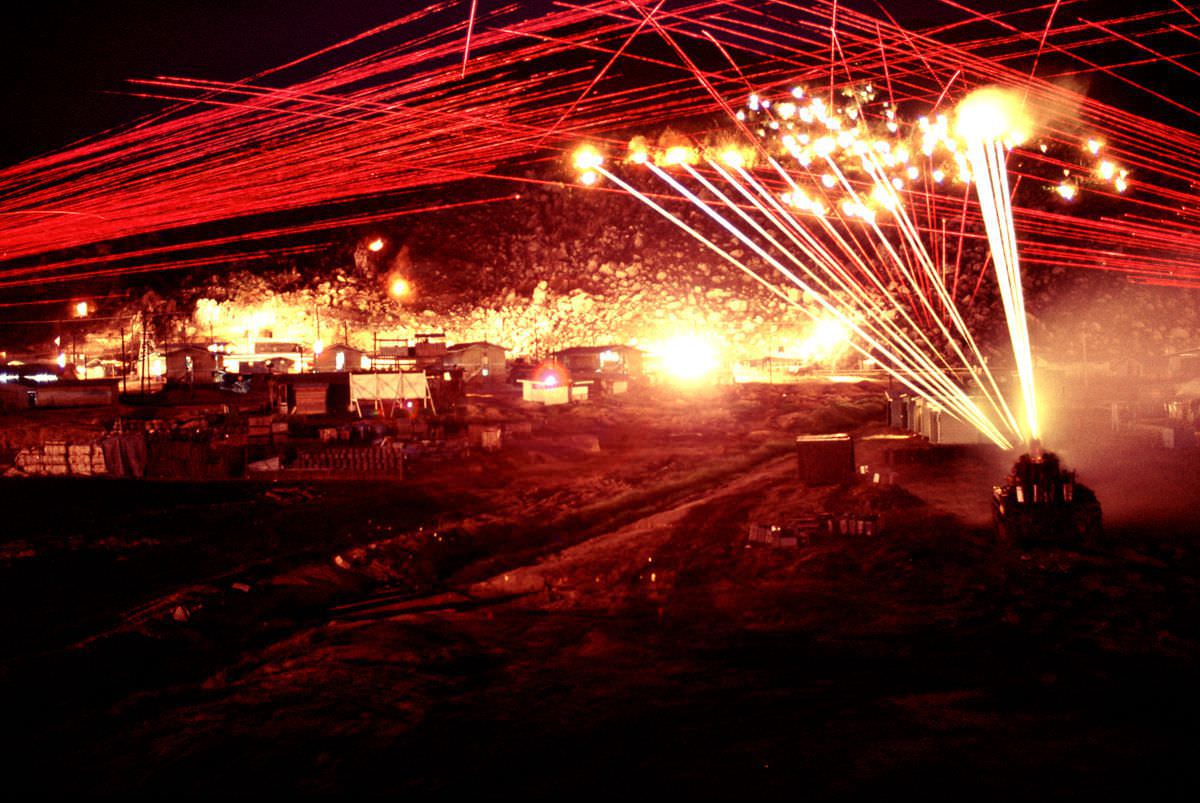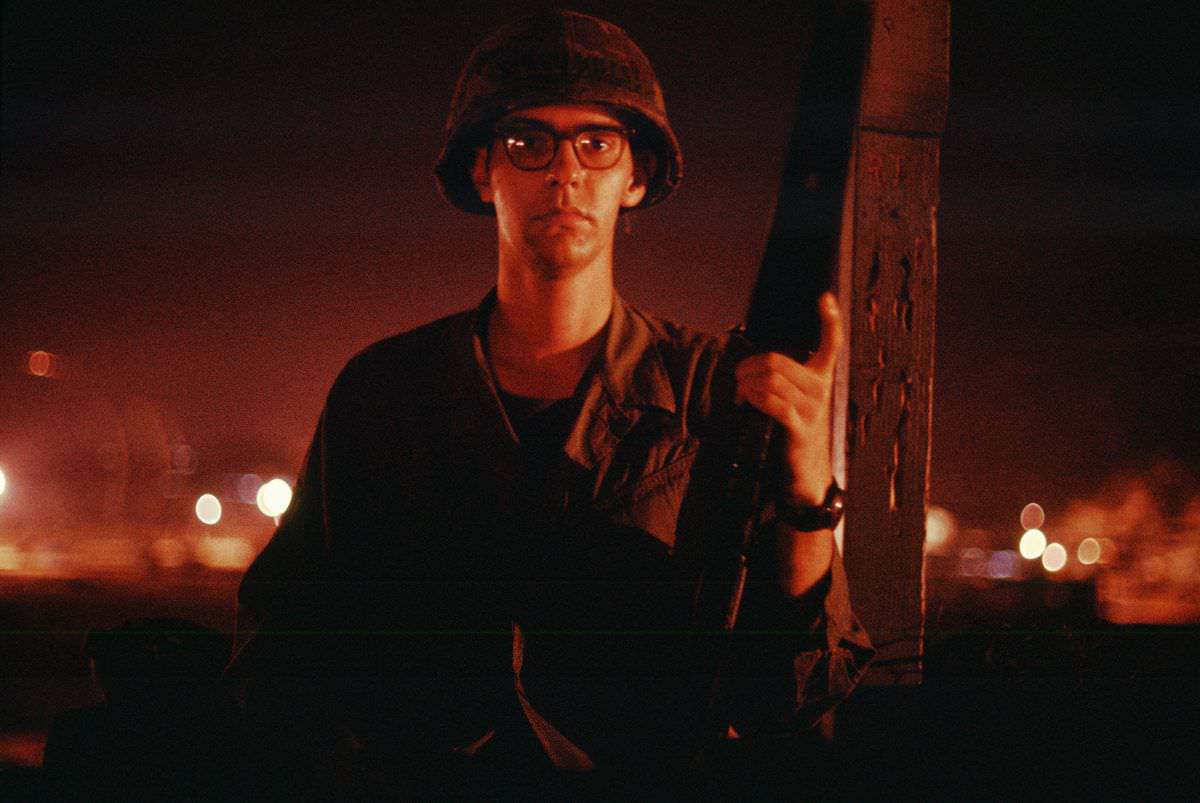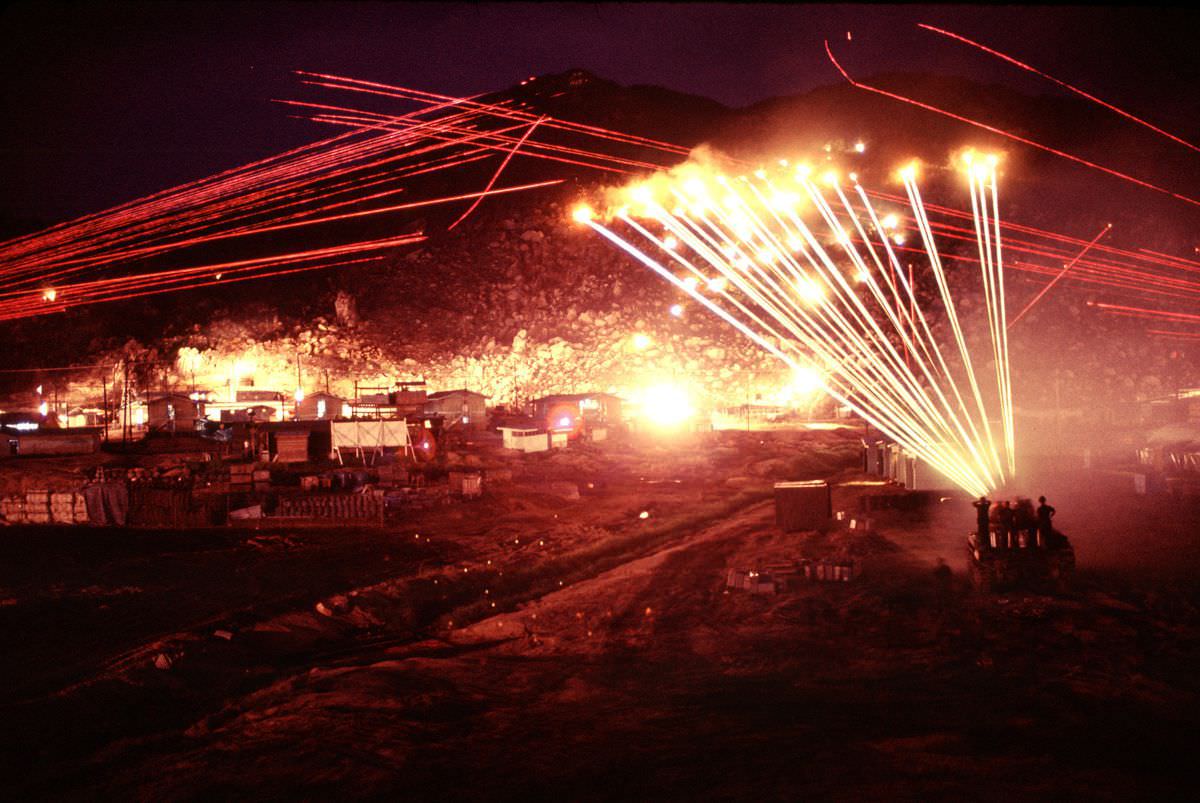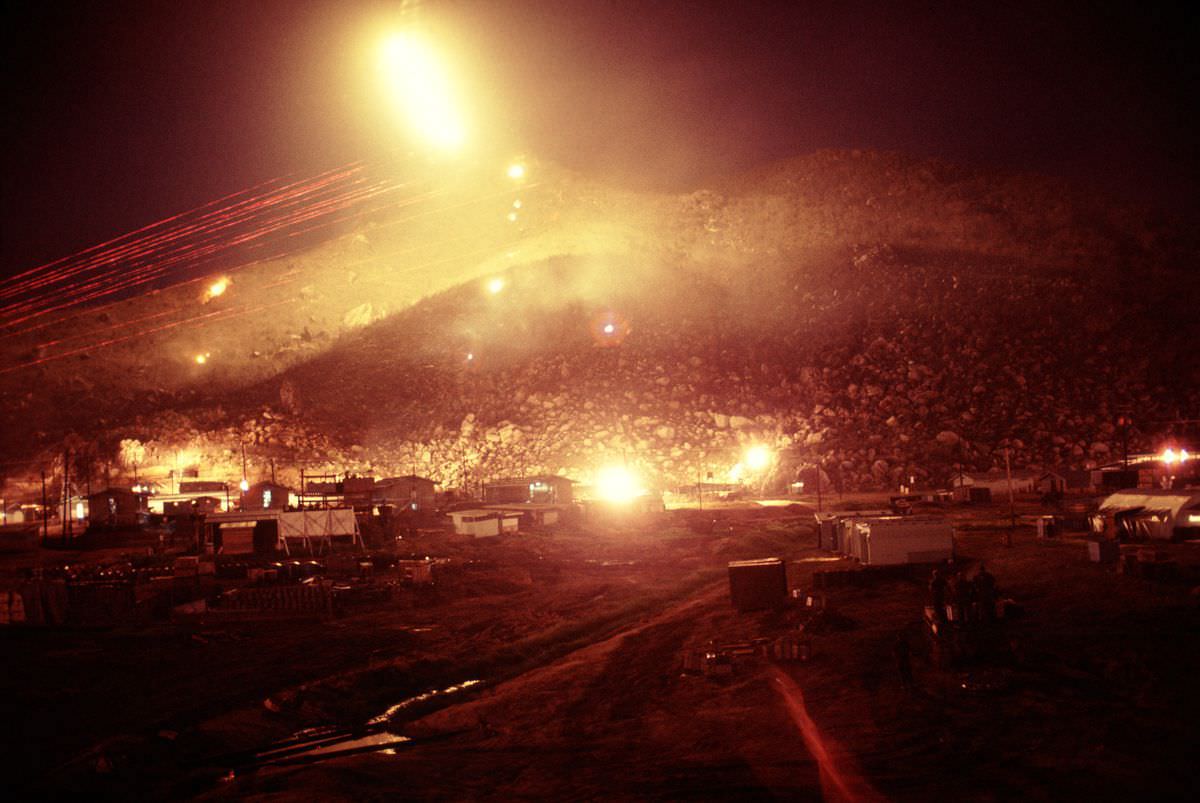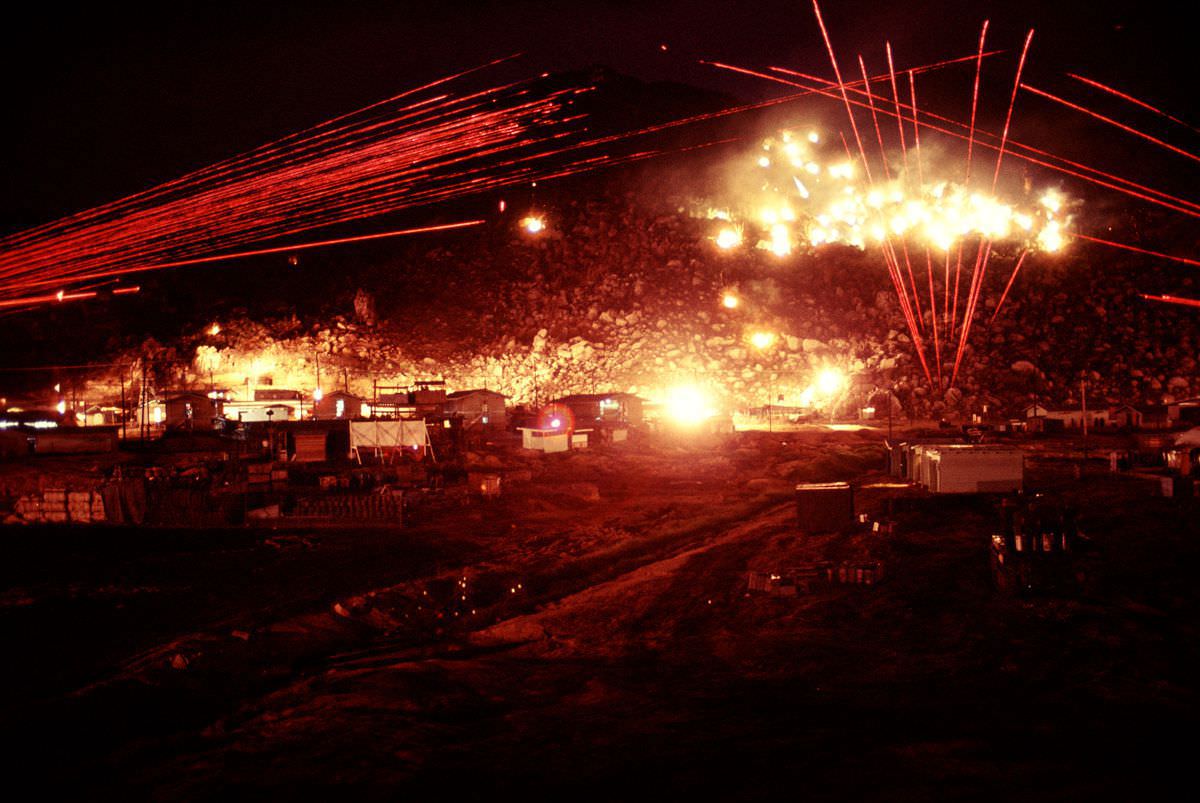These photographs taken during the darkness of night offer a rare and intense glimpse into a specific firefight during the Vietnam War. Captured in April 1970 by an American soldier named James Speed Hensinger, these images document the moment US troops unleashed a massive amount of firepower against an enemy sniper.
At the time, Hensinger was a 22-year-old paratrooper assigned to the 173rd Airborne Brigade. His unit was stationed at a base camp in the Phu Tai area, near the coastal city of Da Nang. According to Hensinger, their camp had come under repeated fire for several consecutive nights from a Viet Cong sniper positioned on a nearby mountain. The sniper would fire bursts from an automatic AK-47 rifle down into the camp. Hensinger described the danger, noting that the high angle of fire meant bullets often came right through the sheet metal roofs of their living quarters, known as “hooches.”
Frustrated and angered by the persistent threat, the soldiers decided they would respond with overwhelming force the next time the sniper attacked. Hensinger recalled their plan to use a “heavy response” to silence the sniper harassing their base.
Read more
Hensinger’s photographs vividly capture the execution of this plan. Taken during the blackness of night, the images are dramatically lit by the streaks of tracer rounds fired by the American soldiers. Bright lines of fire tear across the dark landscape, arcing upwards towards the mountainside where the sniper was presumed to be hiding. The sheer volume of fire depicted is immense, showcasing the “heavy response” the soldiers had decided upon. The photos likely show the stark contrast between the dark, unseen terrain and the brilliant, fleeting light generated by the outgoing bullets and potentially muzzle flashes from multiple weapons firing simultaneously.
These images document the precise moments when the American troops opened fire together. It wasn’t just a few shots, but a concentrated barrage directed at the sniper’s suspected location. The photographs convey the intensity and chaos of unleashing such firepower in the dead of night, seen from the perspective of a soldier within the camp.
Following the intense firefight captured in the photos, Hensinger mentioned that daytime patrols were sent out to search the area. One morning, they discovered a blood trail, indicating that the sniper had likely been hit by the massive volley of fire. Despite this evidence, the sniper was never found. James Speed Hensinger kept these striking photographs private for more than four decades before eventually releasing them to the public.


